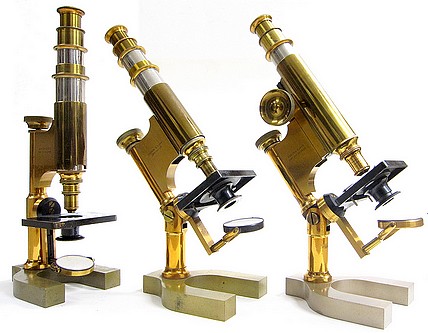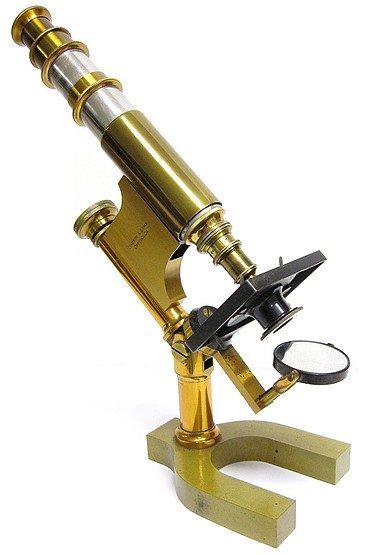
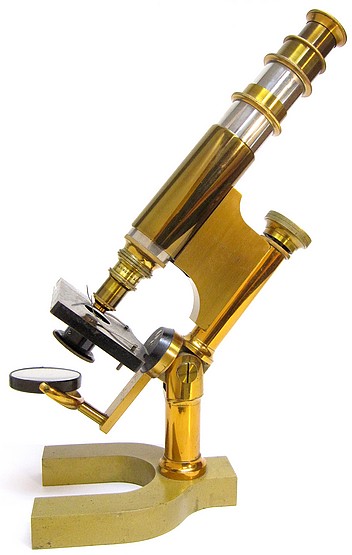
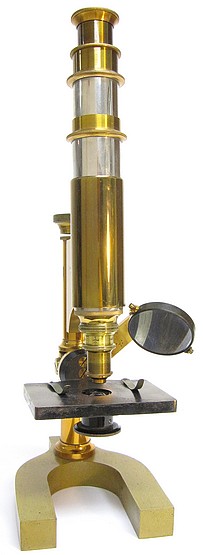
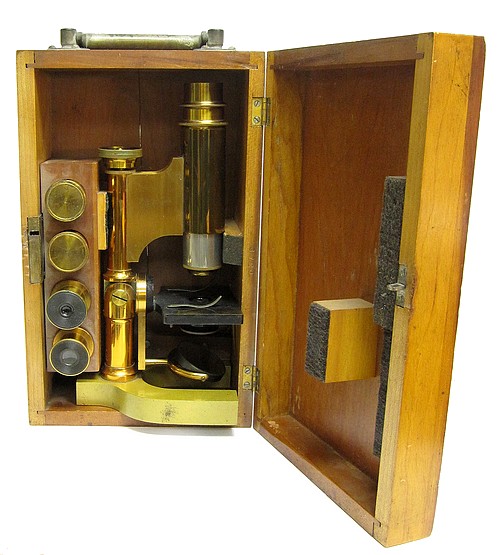
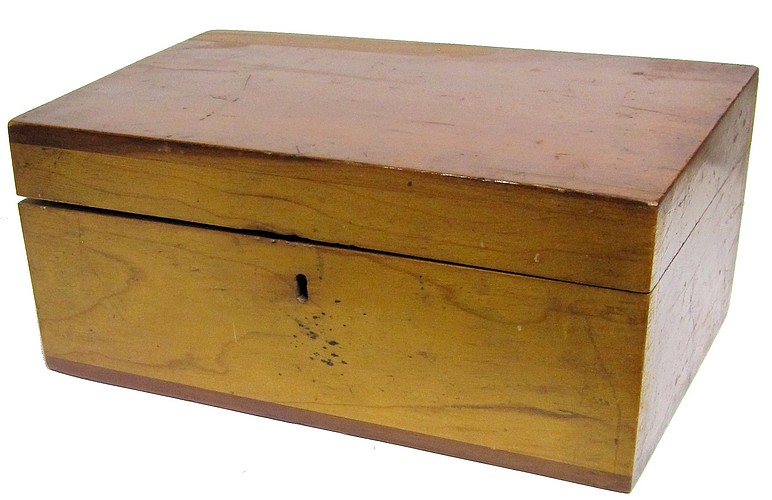
The microscope is signed on limb: Bausch & Lomb Optical Co. and is marked on the other side of the limb with the 1876 patent date. The serial number is stamped on the wood case, 3720. It is an example of the Bausch & Lomb "Harvard" model microscope.
The body of the microscope is constructed in lacquered brass, while the base has a bronzed lacquered brass finish. The height of the tube can be extended by means of a drawtube. The drawtube has a Society Screw on the lower end to accommodate very low power objectives and other accessories. The coarse focusing is by push-tube and the fine focus utilizes a micrometer screw, which operates the patented B&L mechanism. The substage consists of a Wale type iris diaphragm. The mirror is adjustable on its swinging arm and is double sided with plane and concave glasses; it can be positioned above the stage to illuminate opaque objects. The microscope is supplied with two B&L eyepieces, two B&L objectives (marked 1/4 and 1-inch) with their brass canisters.
This model was supplied in several versions. This particular example is capable of inclining and has a coarse focusing by push-tube. There is a more simple version without inclination and a more advanced version that has both inclination and rack and pinion focusing (for example, see this).
*The serial number, 3720, is stamped onto the wooden case. However, it is not clear if the first digit is a 3 or an 8. There are features on this microscope such as the lack of the 1885 patent date and the use of hard rubber for the mirror mounting that suggests the lower number is the correct serial number.

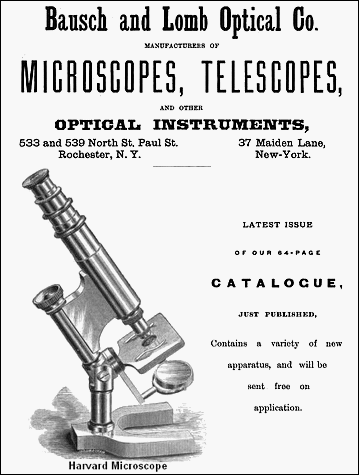

Pat.
Oct. 3,
1876
The following catalog description states that since the Faculty of the Harvard Medical School made suggestions for the design of this model, it was given the title the “Harvard Microscope”.
